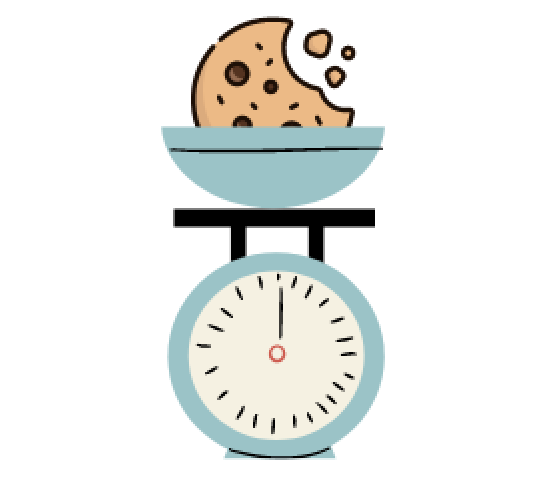How to Use A/B Testing to Make Your Website Awesome
 Analytics Institute
Analytics Institute
There are many aspects to building a website. A web developer, of course, will write up code according to the site's technical specifications. A user experience professional may be involved in the website's design. A product manager may be working with multiple departments to coordinate the build and discover a version that yields the optimal outcome according to an organization's goals. If you're not working for an organization, you might be covering all these aspects of website creation on your own.
So, how do you know whether the website you are building is the most awesome website it can be? Through A/B testing, of course.
Let's pretend you run an eCommerce business...
You build landing pages showcasing a specific product. Your goal is to get as many people as possible who enter that landing page to buy the product. The button the user would click to initiate the checkout process says, "Add to Cart". The next month, you try changing the text of that button to "Buy Now". When you compare the data for two different versions of the website, you learn that significantly more people followed through with purchasing the product under the "Buy Now" version.
You ask yourself, did the change in the text of the button have anything to do with it? Or was it the amount I spent on my marketing campaigns? Or did it have to do with the seasonality of the demand for my product? Or was it sheer luck?
You need a way to get real data-driven answers. You have a hunch that using the "Buy Now" text is chiefly associated with higher sales. To test if this is truly the case, you need to hold all other things equal (to the best of your ability, anyway). As is the case in the field of economics, the concept of ceteris paribus is important in web analytics. By holding other things constant - including the timeframe, in this case - you can get a better understanding of whether or not the "Buy Now" button had an impact on sales.
So, what is A/B testing and how can it help?
A/B testing is a technique you can use to optimize your landing page's ability to convert visitors. This is done by comparing two versions - an "A" version and a "B" version - of the page to determine which one performs better. By making small changes to your page and comparing the results, you can continually improve the performance of your landing page and drive more conversions.
To conduct an A/B test, you'll need to set up two versions of your landing page. These versions should be as similar as possible, except for the element or elements that you want to test. In the example above, the element we wanted to test was the checkout initiation button and whether the text should say "Add to Cart" or "Buy Now".
When you have your two versions set up, you’ll need to determine how to measure the success of each page. This could be through metrics like purchase numbers, conversion rate, time on page, or bounce rate. You’ll then send traffic to both pages and compare the results to see which page performs better. Obviously, after this experiment, you’ll want to end up continuing to use the better version.
Keep in mind that when you first create and publish a website, you do so with the acceptance that it’s probably not going to be the best version of itself. A/B testing is not a one-time activity. Instead, it’s a continuous process of making little changes and measuring the results. By continually testing and optimizing your landing page, you can improve its performance over time and drive more conversions for your enterprise. To discover the best version of a website, you have to put multiple versions out into the world. Don’t let perfectionism hold you back — just ship something!
A/B testing best practices
Begin with a hypothesis: Yes, building a website is as much a science as it is an art. Before you begin your test, make sure you have a clear idea of what you're testing and why. This will help you determine what to measure and how to interpret the results.
Test one modification at a time: By doing this, you’ll know exactly what is causing any changes in performance.
Use a large sample size: To get reliable results, you'll need to test with a large enough sample size. This will ensure that any differences you see in the results are statistically significant.
Be willing to wait: A/B testing takes time, and it’s important to give each test a chance to run its course before making any decisions. From my experience working in the eCommerce space, A/B testing a landing page is a matter of weeks, not days or hours.
So, how do I conduct an A/B test?
Do it manually: Create two versions of a website and send traffic to both of them within the same timeframe. Analyze the results. But honestly, this is complicated and inefficient. There are better approaches.
A/B testing software: A popular free A/B testing tool is Google Optimize. Check it out! Configuration is so much simpler than the manual route and the performance of each 'experiment' is expressed in a relatively user-friendly dashboard.
For the big spenders out there (and those who like some additional features), another good option is Optimizely.
There are actually a lot of other A/B testing tools out there. Some may be a feature of another product or suite of products. Unbounce, for example, is a landing page builder that also includes A/B testing functionality.
Now what?
It's time to start taking action. Use A/B testing and make your website awesome!
Subscribe to my newsletter
Read articles from Analytics Institute directly inside your inbox. Subscribe to the newsletter, and don't miss out.
Written by

Analytics Institute
Analytics Institute
I write about digital analytics and web development.